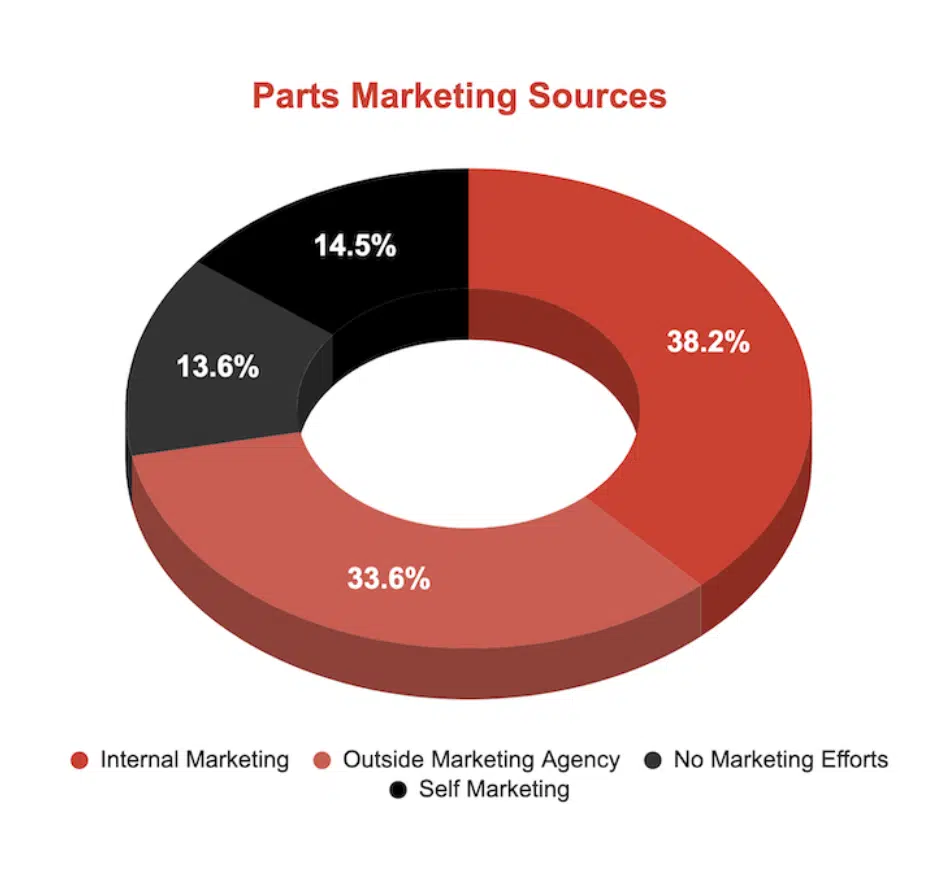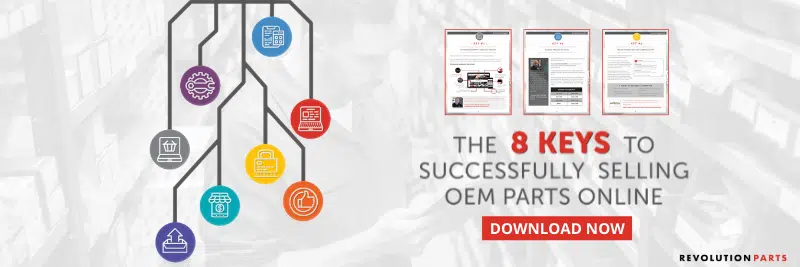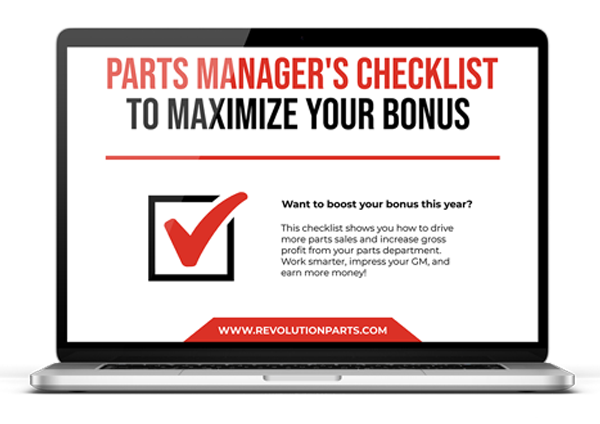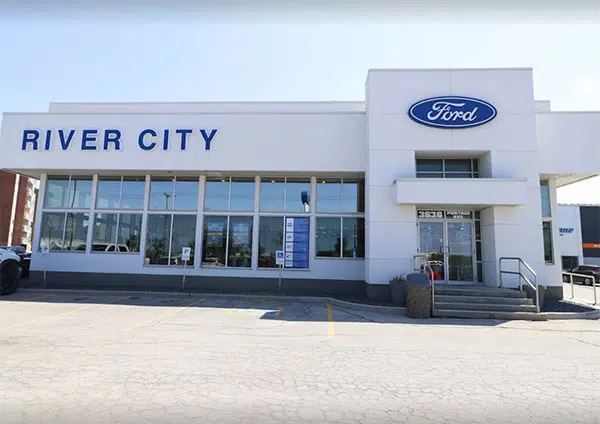Parts departments are filled with EXPERTS on auto parts but many may have little sales experience.
This can make it difficult to grow parts department sales revenue.
Sound familiar?
Your parts team might not be tapping into its full potential.
There are many tricks and tips the experts use that your team can implement to grow parts department sales and squeeze more profit into the dealership each month.
Here are 6 expert tips that will help you sell car parts at your dealership.
1. Prioritize Customer Service and Communication
Nowadays, your customers have access to a lot of information. There’s a good chance they’ve researched the parts they need online before coming to your dealership.
Creating a personalized connection with your customers goes a long way in building customer loyalty.
This, in turn, increases the chances that they’ll come back to shop with you next time!
Establish your dealership as a trustworthy and credible source of information on everything they need to know about cars.
If you’re feeling ambitious and really want to go the extra mile, start up an auto blog they can refer to for installation guides and other automotive topics.
2. Review Your Auto Parts Pricing Strategy
Instead of applying the same pricing across the board, try breaking down your inventory into smaller categories and repricing them accordingly.
There are a lot of ways you could break your inventory down, you can break them down by:
- Popularity of the part
- Price of the part
- Parts vs accessories vs. performance parts
- Transportation and handling costs
- Front counter vs. back counter customers
For something small and inexpensive, like nuts, bolts, and screws, apply a larger pricing margin. Instead of selling at MSRP, which might only be around 15-20 cents, you can easily set up a matrix that marks it up to around $1.
For online sales, setting different margin pricing across your inventory is absolutely essential.
Without a pricing matrix, you often end up overcharging for expensive parts and undercharging for cheap parts.
This will either scare away potential shoppers or cause you to sell parts at a loss.
Price parts accordingly and pay attention to where you need to change your pricing structure.
3. Improve Your Stocking Practices
The best way to improve your parts sales is to always have the products customers need readily on hand. If you don’t have it, you can’t sell it!
Listen to customers and monitor your sales.
What sells the most? What sells the least?
If you know you can sell a LOT of something, you might even be able to order a larger pallet and qualify for a better bulk order discount.
Differentiate between what you sell from inventory and what you order specifically for a customer.
This kind of classification will improve inventory management and help you make better stocking decisions.
You can also use your inventory to compare what parts customers are buying from other dealers and include them in your future inventory.
Data-based decisions will lessen the risk of overstocking or understocking parts and accessories.
You can also try stocking fun novelty items! Shoppers are always attracted to fun items from their favorite car brands, so use this to your advantage.
Aside from auto parts, try selling things like:
- Hats
- T-shirts
- Water bottles
- Keychains
- Backpacks/Laptop bags
- License plate frames
Since auto parts are not always the most attractive items to put on display, use these items to liven up your counter.
4. Launch an Online Sales Channel for Auto Parts and Accessories
The online automotive parts market is expected to reach $22B in sales by 2023, and you don’t want to miss out on the opportunities!
The internet exposes you to new national and global markets at a fraction of the cost.
Launching your own parts website adds a valuable new channel for the parts department and can generate tens of thousands of dollars each month in sales.
Marketplaces like eBay Motors and Amazon grow larger every year… so why not sell auto parts there, too?
Solutions like RevolutionParts make it easier than ever to plug in and start selling, so don’t worry about being “technical” enough to grow parts department sales using the internet.
5. Eliminate Obsolete Auto Parts
Obsolete parts tie up money and warehouse space that you could otherwise invest in fast-moving parts.
While it’s nearly impossible to get rid of obsolete auto parts by just selling them at the counter, we have a few tricks you can use to keep them at a minimum.
Special-Order Deposit
Ask special-order customers to make a deposit, and communicate clearly that you will return the auto part to the manufacturer if it is not collected within a specific timeframe.
Review Reports
Analyze your inventory reports to identify fast-moving parts that are not selling as much or slow-moving parts that are picking up to balance your inventory.
Sell to Other Dealers
Alert other dealerships in your auto group of the parts you have on hand to make sure they don’t order a new part you already have, or offer it at a discount.
The trick is to check for obsolete parts on a regular basis and analyze your inventory to avoid overstocking on parts that may soon become obsolete.
Sell Obsolete Parts Online
The internet is a great place to get rid of your obsolete auto parts.
It may be unlikely that a shopper in your local area will be looking for that part, but you might be able to find a buyer when you sell online and tap into a national market.
Auto part shoppers often know that obsolete parts will be tricky to find, so online marketplaces like eBay Motors are one of the first places they’ll look to buy from.
When you offer these parts on eBay or a standalone parts website, you can still make a sale instead of tossing the part and throwing that money down the drain.
6. Try Parts Marketing
Ultimately, these strategies only work if people know you have auto parts and accessories for sale!
If you have an internal marketing department, they should be helping you with a marketing strategy specifically dedicated to the parts department.
However, that’s not an option for many dealerships.
There are plenty of easy DIY marketing tricks you can use to help drive more parts department sales.
Use online marketing tools to your advantage.
Email marketing, digital advertising, social media, and many more digital marketing tools can help your parts department grow its revenue.
Understandably, not all parts departments have the time to do their own marketing, nor do they have the internal support or expertise to market parts.
In this case, they may read out to outside marketing agencies.
Wherever you choose to do your marketing, you want to be sure they specialize in marketing parts if you want to see a high return on investment.
For example, dealers using RevolutionParts Marketing Services see an average return of $8.75 for every dollar spent on advertising.

Conclusion
If you want to grow parts department sales, it requires deliberate effort and innovation from the team.
These tips are a great place to start, but you can always find new ways to improve!
While there are many strategies you can employ, leverage your creativity as a team to come up with the best sales plan.
Take risks, utilize online platforms, and always place the customers’ needs at the center of your decisions.
If you want to learn more about how you can increase parts department revenue by selling OEM parts online, download our free guide to learn the 8 Keys to Success.





